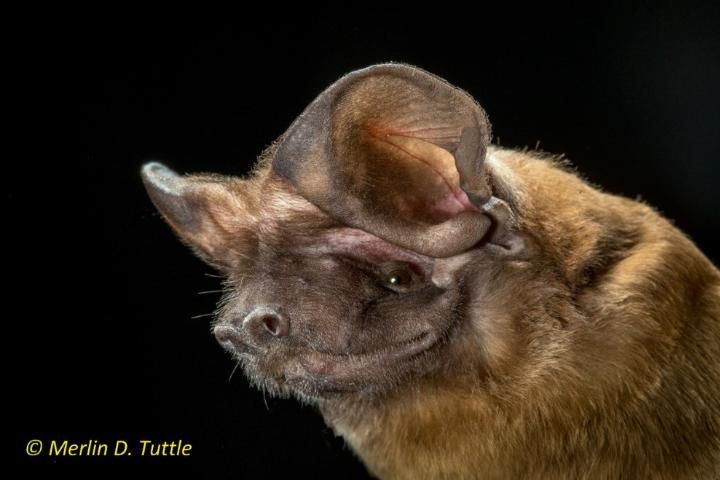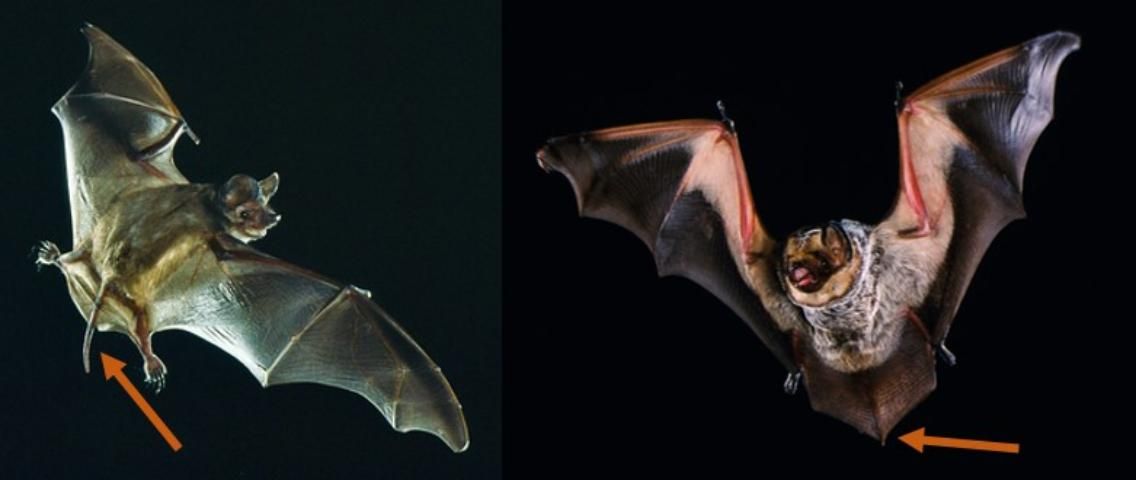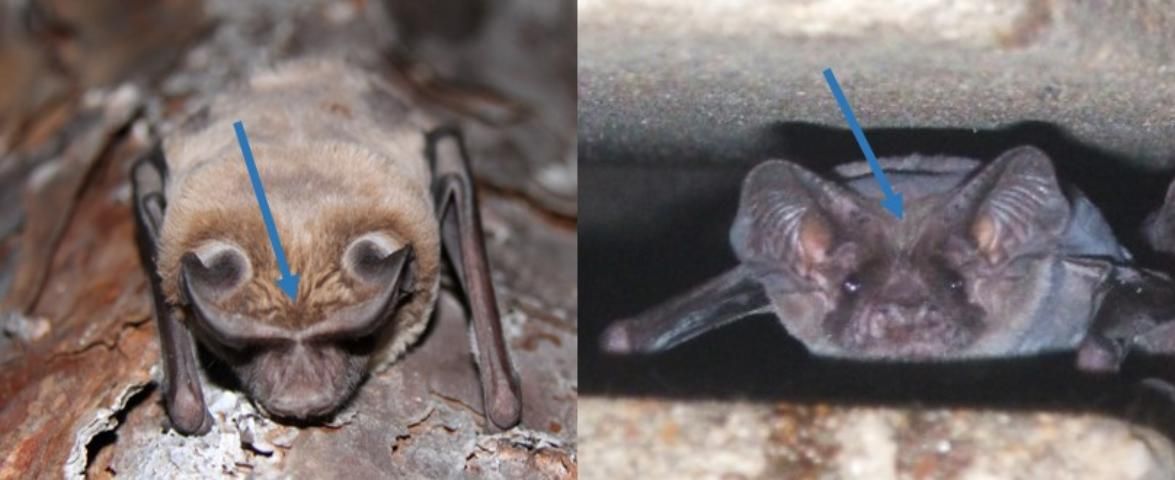The Florida bonneted bat (Figure 1) is one of only two endangered species of bat in Florida, and the state's only endemic flying mammal ("endemic" means that it is found nowhere in the world but in Florida). With a wingspan of 20 inches (50 cm), it is Florida's largest bat and the third largest of all 48 species of bats in the United States. Fur color varies from brown to gray to black.

Credit: Merlin Tuttle, Merlin Tuttle's Bat Conservation (http://www.merlintuttle.com/)
Little is known about these rare bats. They occur only in southern Florida, with recent confirmation of presence in Miami-Dade, Broward, Collier, Hendry, Lee, Charlotte, Glades, Highlands, De Soto, and Polk Counties (Figure 2).

Credit: Emily Evans
These bats roost (sleep during the day) in cavities or beneath peeling bark of live and dead pine trees (Pinus elliotti, P. palustris), bald cypress (Taxodium distichum), royal palms (Roystonea regia), rock outcrops, bat houses, chimneys, and under barrel roof tiles. They roost alone or in groups of up to 50 individuals.
Florida bonneted bats typically leave their roosts shortly after sunset. They fly long distances to forage on insects at high altitudes. Bonneted bats' broad, funnel-shaped ears point forward, helping them detect insects at long range while in flight.
The Florida bonneted bat was listed as federally endangered in 2013 because of concerns over habitat loss, degradation, and modification caused by humans. Additional concerns include the species' small population size and restricted range, the small number of known colonies, their slow reproduction, and the relative isolation of separate populations of bonneted bats.
How do you know if you have found a bonneted bat?
First, check the rump to determine if a tail is visible. If you see a tail longer than one inch (Figure 3), the bat is one of Florida's three species of free-tailed bats (in the family Molossidae).

Credit: Merlin Tuttle, Merlin Tuttle's Bat Conservation (http://www.merlintuttle.com/)
Read below to determine how to differentiate the three species of free-tailed bats found in Florida.
Florida Bonneted Bat (Eumops floridanus)
- Is found only in central and south Florida (as far north as Polk County)
- Roosts in pine tree cavities, palms, rock crevices, and man-made structures (beneath barrel tile roofs and in bat houses)
- Roosts in small groups (under 50 individuals)
- Has ears that are not fully separated from one another (they are joined at the base; Figure 4)
- Is the largest bat in Florida, about the size of a standard iPhone when it is at rest and its wings are folded

Credit: Kathleen Smith, FFWCC, used with permission; Elizabeth Braun de Torrez, UF/IFAS
Brazilian Free-Tailed Bat (Tadarida brasiliensis)
- Is found throughout the entire state of Florida, except the Keys
- Often roosts during the day in man-made structures (attics, stadiums, bridges, and bat houses)
- Typically roosts in large congregations (1,000–500,000 individuals)
- Produces a musky odor that is noticeable from some distance away
- Has ears that are fully separated from one another (not joined at the base like bonneted or velvety free-tailed bat ears; Figure 4)
- Is about the size of a standard business card when it is at rest and its wings are folded
Velvety Free-Tailed Bat (Molossus molossus)
- Is found only in extreme south Florida (the Keys and perhaps the Everglades region)
- Typically roosts beneath roofs of man-made structures
- Roosts in the Keys in moderately-sized groups (50–300 individuals)
- Has ears that are not fully separated from one another (they are joined at the base)
- Is about the size of a standard business card when it is at rest and its wings are folded
If you find a bonneted bat, do not disturb it. Contact U.S. Fish and Wildlife Service in Vero Beach, FL (772-562-3909 or verobeach@fws.gov) to alert them to the location of the bat(s).
Acknowledgement
This publication is funded in part by the Renewable Resources Extension Act (RREA).
Additional Information
Florida Fish and Wildlife Conservation Commission. Living with bats.
Ober, H. K., M. B. Main, and G. M. Allen. 2004. Bats of Florida. WEC186. Gainesville: University of Florida Institute of Food and Agricultural Sciences. https://edis.ifas.ufl.edu/uw203
Ober, H. K., and F. J. Mazzotti. 2008. Conservation of Bats in Florida. WEC247. Gainesville: University of Florida Institute of Food and Agricultural Sciences. https://edis.ifas.ufl.edu/uw291
Ober, H. K. 2008. Effective Bat Houses for Florida. WEC246. Gainesville: University of Florida Institute of Food and Agricultural Sciences. https://edis.ifas.ufl.edu/uw290
Ober, H. K. 2008. Insect Pest Management Services Provided by Bats. WEC245. Gainesville: University of Florida Institute of Food and Agricultural Sciences. https://edis.ifas.ufl.edu/uw289
Wisely, S. M., and H. K. Ober. 2015. Facts about Wildlife Diseases: Rabies. WEC239. Gainesville: University of Florida Institute of Food and Agricultural Sciences. https://edis.ifas.ufl.edu/uw282
Ridgley, F. N. 2015. "Florida bonneted bat house plans." Miami Zoo http://zoomiamiconservation.com/wp-content/uploads/2014/03/Florida-Bonneted-Bat-House-Plans.pdf